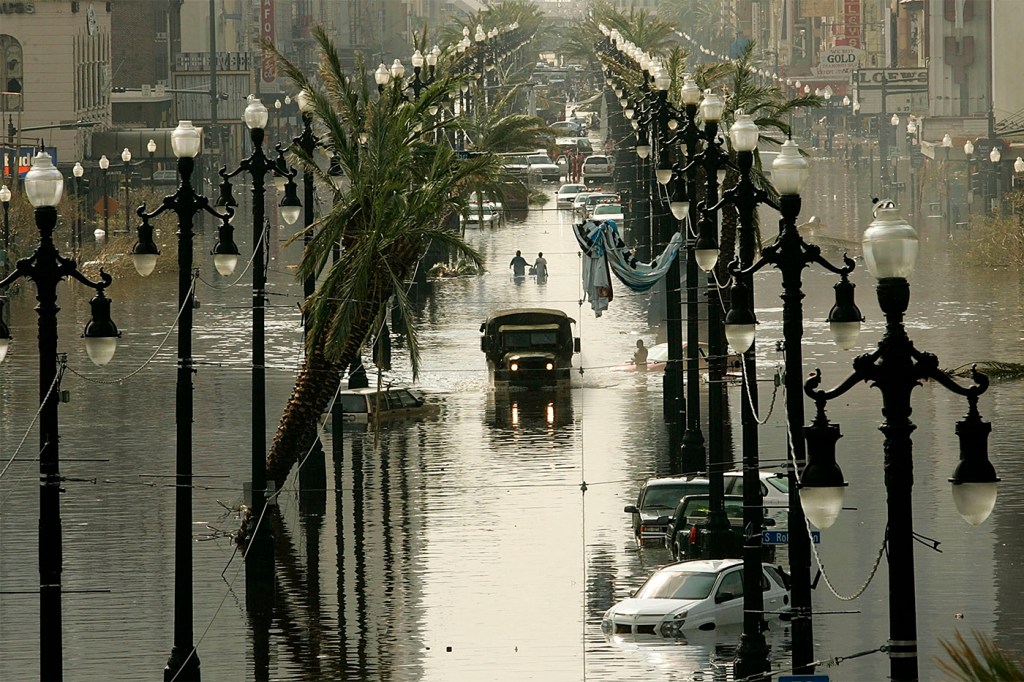Recovery from natural disasters or man-made attacks begins with being prepared, researchers say

It would be bad enough if severe river flooding washed out roads and train tracks leading to a U.S. military installation and interrupted transportation in and around the facility.
What if a foreign adversary took advantage of that natural disaster and launched a cyberattack in the area? How quickly could recovery take place before national security was affected?
This is the sort of scenario Auroop Ganguly, director of AI for Climate and Sustainability and co-director of Northeastern’s Global Resilience Institute, and his interdisciplinary team are analyzing for a U.S. Department of Defense-funded study on recovery from disruptions to critical infrastructure, both military and civilian.
Ganguly says the focus is on mapping failure and recovery pathways and adapting to changing conditions, which include more extreme weather events as a result of climate change and evolving security challenges, including terrorism and cyberattacks.
The study will pay particular attention to compounded threats, when the pressure of one disaster is made worse by the co-occurrence of another.
“Recovery has to be efficient and effective. Not like what happened in New Orleans after Hurricane Katrina. Even now, the city is not what it used to be,” Ganguly says.
“Our technology is getting so complicated, if one thing fails in the power grid, it can have cascading effects. That has an impact on transportation, communication and water,” he says.
“We have to make plans in advance for robustness and recovery,” Ganguly says.
Northeastern is the lead researcher on the $3 million, five-year DOD project being conducted in collaboration with the University of California at Berkeley, the Pacific Northwest National Lab, the U.S. Army Corps of Engineers and the U.S. Naval Research Lab.
The team is using network science and engineering to develop a theoretical framework for recognizing system fragilities and putting recovery processes to work.
Featured Posts
Members say the resilience of an installation depends on the interconnected components within the installation as well as the surrounding lifelines and ecosystems that support the installation.
“We’re looking at different vulnerabilities in infrastructure systems,” says Jack Watson, an Ph.D. intern in Ganguly’s lab since 2021, who is currently funded by the Pacific Northwest National Laboratory as a graduate fellow.
Watson’s task is to analyze the resilience of train and subway systems in the Northeast corridor that stretches from Washington to Boston.
“When we talk about compound extremes, we mean a couple of different things,” he says. “If a storm hits a city and causes a huge storm surge at the same time it’s high tide, that damage will be worse than if it wasn’t high tide.”
“The other kind of compound extreme we’re talking about is human and natural hazards together. Things like floods or wildfires, and then opportunistic cyberattacks that take advantage of the already degraded network,” Watson says.
“That’s an especially timely challenge as climate change is getting worse, weather extremes are getting worse. And then all of our infrastructure is becoming more interdependent. It’s highly digitized. That increases the risk of cyberattacks,” he says, pointing to the Colonial Pipeline ransomware attack in 2021.
The implications are global, says Robyn Anderson, Northeastern technical program development and operations manager for the DOD project.
Think about U.S. military bases in the South China Sea that are subject to typhoons and cyber terrorism or how Iranian-backed Houthi militants in the Red Sea affect national security and threaten to upset the global supply chain by attacking ships, she says.
“These compound events are happening globally, and affect the Department of Defense installations and our military families around the world,” Anderson says.
“National security extends to infrastructure beyond military installations,” Watson says.
He says the team members want their theoretical framework, which will be published in peer-reviewed venues or filed as inventions where appropriate, “to be as generalizable as possible.”
“This is just as important for things like airports, factories, supply chains and gas transportation networks as it is for DOD installations.”
Some of the recommendations for resilience will be short term, such as identifying a central transportation hub as a recovery priority, Watson says. Some recommendations will be long term, such as relocating a train or subway line due to rising sea levels.
Ganguly says the team is developing methods and processes which they have been calling Multiplex Network Science and Multiscale System Dynamics (MNS-MSD) to deal with the complex interactions between systems.
One major goal of the project, titled NICE for Networked Infrastructures Under Compound Extremes, is to preserve mission readiness for the Department of Defense so it can not only respond in wartime but also lend humanitarian aid, Ganguly says.
He says that when it is complete, the frameworks will be “useful more broadly to science, engineering and society. and help inform innovations that can save human lives and property, sustain economic progress, and ensure national and homeland security.”
The project team will hold their first in-person workshop April 25-26 on Northeastern University’s Boston campus to discuss the current state of the project and next steps.











